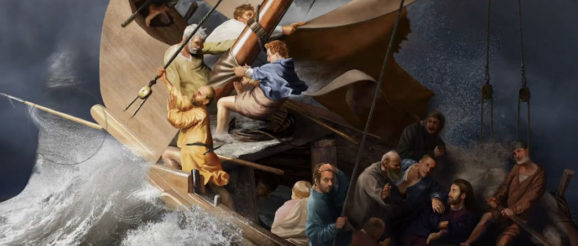How Artful Use Of Technology Is Driving Innovation In Marketing

This article is part of our September 2018 series about the state of advertising. Click here for more.
Experts at the MediaLink event in New York City’s Whitney Museum discussed the profound impact that technology has had on their businesses.
According to Ukonwa Ojo, CMO of consumer beauty brand Coty, technology is making it impossible for brands to become irrelevant.
“You can listen to culture. Tech enables you to find the consumers your company share values with, and it allows you to create products and experiences that delight them,” she told attendees on Tuesday.
Case in point: Coty lets Snapchat users try on products virtually with their cameras. In April, Coty added a button onto the augmented reality (AR) lenses it is running on the app that enables users to make purchases without ever leaving it.
“The key is really observing and interacting with the people who love your brand or who love your industry,” Ojo said.
Another important point to keep in mind is that culture and social norms have changed, said Dario Spina, CMO of Viacom Velocity.
“Twenty years ago, I probably would not have cared too much about how brands are sourcing their raw materials or what a company’s HR practices were,” he said. “Now consumers are making decisions based on brand persona.” It’s important to keep this in mind, he added, as you create experiences and messaging for your customers.
Alex Amado, VP of experience marketing for Adobe (CMO.com’s parent company), said the company has always mixed art and technology. One example: when Adobe partnered with Goodby Silverstein & Partners/MediaMonks and challenged four digital artists to re-create lost or stolen masterpieces using Adobe Stock and Photoshop.
Artificial intelligence and machine-learning capabilities power content understanding, search and discovery, and creative intelligence in Adobe’s creative solutions. Content understanding, for example, helped the digital artists more easily find images, aesthetics, styles, faces, colors, and foregrounds/backgrounds that matched the original masterpieces.
The photo-editing process also benefited from Photoshop’s understanding of objects and actions in pictures. For example, a face-awareness feature enabled the artists to change a smile to a frown without distorting a photo. Additional features, such as auto-fixing and editing (for instance, automatic red-eye detection), also optimized their workflows, as did the auto-curation of images in Adobe Stock. In fact, the image at the top of this article is a remake of “The Storm on the Sea of Galilee,” by Rembrandt van Rijn. It was created for Adobe by Ankur Patar.
Sophie Ann Kelly, SVP of Diageo’s of North American Whiskeys Portfolio, talked about the company’s July promotion of the Tattoo Edition of its Bulleit Bourbon. Four limited-edition bottles were introduced to celebrate National Tattoo Day, with each bottle featuring a tattoo that came to life via AR.
The bourbon brand teamed with four tattoo artists, and each bottle had a scannable QR code to trigger the AR experience. It then leveraged that experience in all of its outdoor advertising, encouraging fans to purchase all four bottles in the collection.
“You must start with what is your brand about and where do you play,” Kelly told attendees. “[There needs to be that] sense of collaboration when you are marketing. It is about finding the right people to collaborate with and doing something real in the world and then amplifying that. Tech provides an accelerant for all of us if we choose to embrace it.”
Taboola CEO Adam Singolda talked about the ways in which technology is allowing companies to become more creative and impactful. Tech, he said, is helping people discover new content and connecting consumers to people and what they like. It is also allowing companies to A/B test and breaking the rules of how to render content and experiences.
“Deep learning is really exciting, and it is just as big as the invention of electricity,” Singolda said. “Investing in it will open up an opportunity and change everything we know. It is already so close to changing the way we live.”
Diageo’s Kelly said that part of experimenting with technology—and doing it well—is to have a consistent feedback loop.
“You have to have a transparent conversation with consumers,” she said. “Be transparent about what is going on. It’s about co-collaboration and keeping the conversation alive.”
